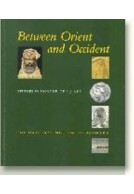Globalizing Art (Paperback)
Negotiating Place, Identity & Nation in Contemporary Art
Imprint: Aarhus University Press
Pages: 296
ISBN: 9788779345720
Published: 13th January 2012
Script Academic & Professional
Pages: 296
ISBN: 9788779345720
Published: 13th January 2012
Script Academic & Professional
You'll be £28.50 closer to your next £10.00 credit when you purchase Globalizing Art. What's this?
+£4.99 UK Delivery or free UK delivery if order is over £40
(click here for international delivery rates)
Need a currency converter? Check XE.com for live rates
(click here for international delivery rates)
Need a currency converter? Check XE.com for live rates
What is the common denominator of Nordic artists and artist groups like Adel Abidin, Eija-Liisa Ahtila, Das Beckwerk, Björk, Olafur Eliasson, Håkki, Michael Elmgreen and Ingar Dragset, Julie Edel Hardenberg, Lise Harlev, Kristian von Hornsleth, Sami van Ingen, Jonas Hassen Khemiri, Søren Lose, HuskMitNavn, Pekka Niskanen, Ellen Nyman, Øyvind Rimbereid, Annica Karlsson Rixon and Superflex? They all explore local identity formations and images of nationality and trans-nationality within a global context. The term 'Nordic' is indeed constructed historically for political, commercial and scientific reasons, but as any symbolic universe it obtains a material sense as a geopolitical 'place' through the collaborations between the nations involved. The Cartoon Crises and its many reverberations issuing from Denmark in 2005 became an important turning point for discussions on national as well as Nordic identities and values. The new cultural agenda in which local identities were branded for a global public, concurrent with attempts in domestic politics to create national safeguards toward globalisation, has indeed been noticed by artists during the last decade. In light of new global and transnational relations, contemporary art has requested a renegotiation of the frameworks constructing national and Nordic communities. All articles in this book discuss ways in which art seeks to redistribute national and cultural identity. Common to the artists examined is the drive to combine cultural images from multiple sources and several media. Thus, the book also explores how works that express new identity formations confront the conventional aesthetic production of meaning and, all in all, it contributes to the examination of how art reinvents itself when dealing with unresolved issues of political, national and cultural belonging.
Other titles in Aarhus University Press...










